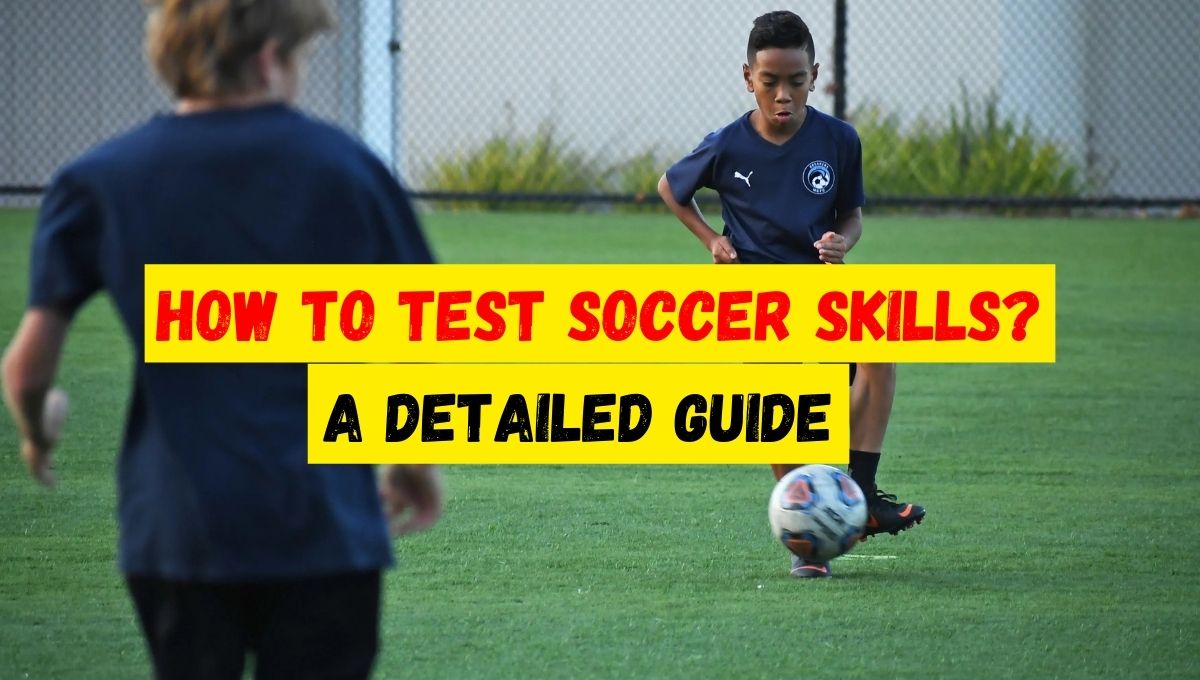Testing soccer skills involves assessing various technical, tactical, physical, and mental aspects of a player’s game. The video below is just an example of it:
Here is a Detailed Guide on How to Test Soccer Skills:
- Dribbling:
- Set up a dribbling course with cones or markers. Assess a player’s ability to maneuver through obstacles, change direction, and control the ball at varying speeds.
- Ball Control:
- Use passing drills to evaluate a player’s first touch and ball control. This can include receiving passes with different surfaces of the foot and maintaining possession in confined spaces.
- Passing Accuracy:
- Set up passing exercises to assess a player’s ability to accurately deliver short and long passes. Include different passing techniques such as instep, inside of the foot, and lofted passes.
- Shooting Accuracy and Power:
- Evaluate shooting skills by assessing a player’s ability to hit the target with accuracy and generate power. Include different shooting scenarios, such as volleys, one-on-one situations, and free-kicks.
- Heading Ability:
- Test heading skills by delivering crosses or long balls for players to head accurately toward a target. Assess both defensive and offensive heading abilities.
- Tactical Understanding:
- Set up small-sided games or scenarios to evaluate a player’s understanding of positional play, movement off the ball, and decision-making in different game situations.
- Speed and Agility:
- Use agility drills, speed tests, and sprinting exercises to assess a player’s speed, quickness, and ability to change direction rapidly.
- Endurance:
- Assess a player’s endurance through conditioning drills, interval running, or small-sided games that require constant movement over an extended period.
- Teamwork and Communication:
- Observe a player’s ability to work with teammates, communicate effectively on the field, and contribute to the overall team strategy.
- Game Intelligence:
- Set up scenarios that test a player’s ability to read the game, anticipate opponents’ moves, and make intelligent decisions under pressure.
- 1v1 Defending:
- Assess a player’s defensive skills by setting up one-on-one situations. Evaluate their ability to apply pressure, jockey attackers, and make successful tackles.
- Goalkeeper Skills (if applicable):
- For goalkeepers, test shot-stopping ability, distribution, command of the penalty area, and communication with the defense.
- Mental Toughness:
- Create pressure situations in training or testing scenarios to observe how players handle stress, setbacks, and maintain focus.
- Versatility:
- Evaluate a player’s ability to play in different positions or adapt to different tactical systems.
- Free Play Observation:
- Watch players in less structured, free-play situations to observe their creativity, spontaneity, and ability to express themselves on the field.
- Feedback and Assessment:
- Provide constructive feedback to players based on the assessments. Highlight strengths and areas for improvement, and work on a development plan.
It’s important to set the testing methods according to the age and skill level of a player. Plus, creating a positive and supportive environment during testing will encourage players to be confident and showcase their skills more effectively.
Lastly, assessments and feedback is an ongoing process especially for young players, and it can contribute to continuous improvement and skill development.
Also Read:
- How to Become a Soccer/Football Coach?
- What age is safe for football? (Guide for Parents)
- How to know if your child is good at Football?

